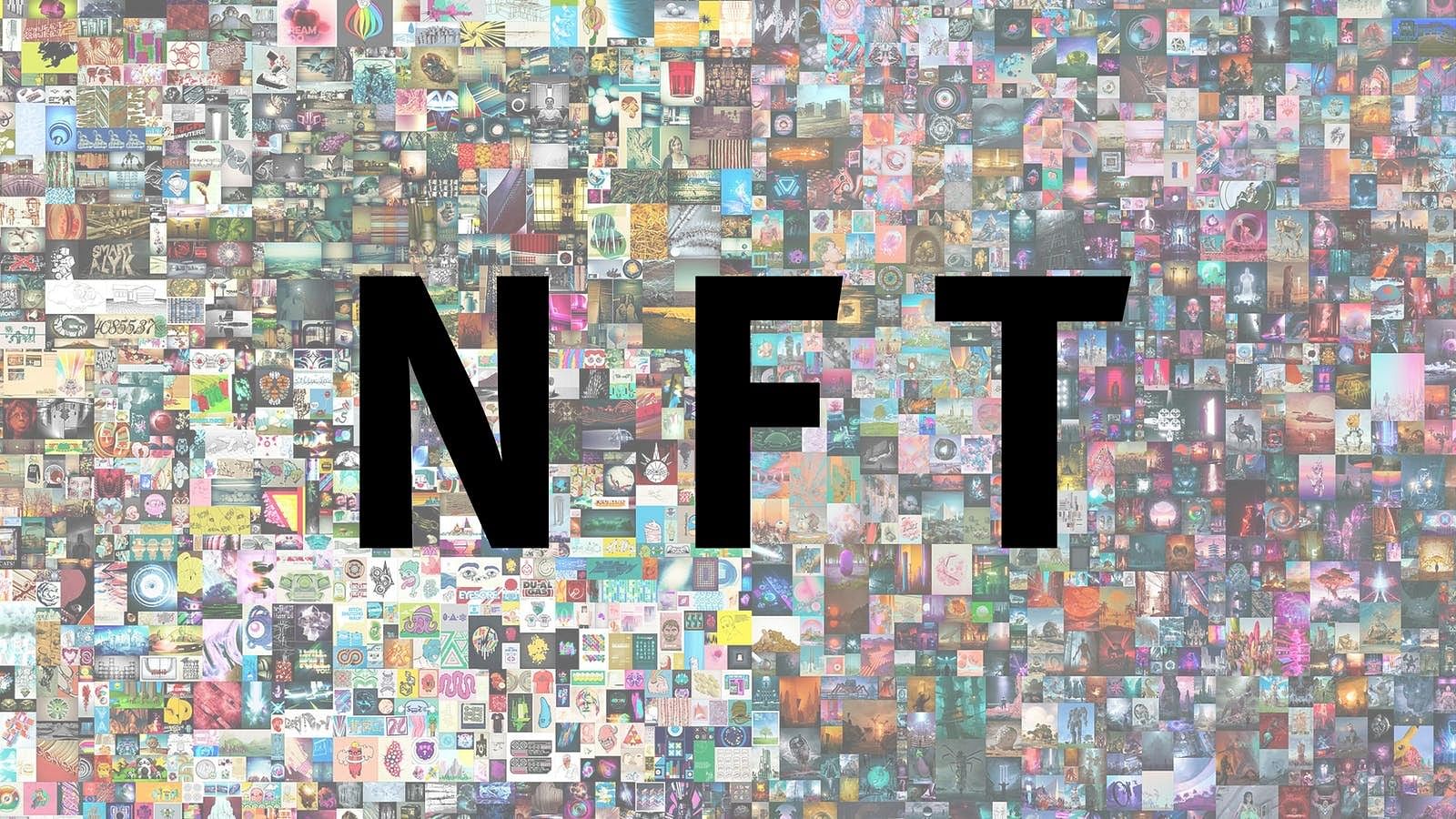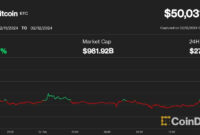If you’ve been keeping an eye on the tech news lately, you’ve probably heard of terms such as Bitcoin, blockchain, and more recently, NFTs. Stories of multi-million dollar auctions for the digital assets have attracted the attention of artists and collectors alike. But what are NFTs? And how do they work?
Here, we explore the basics of non-fungible tokens, the technology behind them, and their uses in everyday life. We also look at some of the skills and knowledge you’ll need to get involved with them.
What is NFT?

- NFT stands for a non-fungible token, which means it can neither be replaced nor interchanged because it has unique properties.
Features –
- Digital Asset – NFT is a digital asset that represents internet collectibles like art, music, and games with an authentic certificate created by blockchain technology that underlies Cryptocurrency.
- Unique – It cannot be forged or otherwise manipulated.
- Exchange – NFT exchanges take place in cryptocurrencies such as Bitcoin on specialist sites.
Cryptopunks is a remarkable example of NFT. It enables you to buy, sell and store 10,000 collectibles with proof-of-ownership.
What is the history of NFT?
- The existence of NFT i.e. Non-Fungible Token first came in May 2014.
- The first NFT was created by Kevin McCoy and Anil Das.
- It works on the principle based on the Ethereum blockchain technology.
How Is an NFT Different from Cryptocurrency?
NFT stands for non-fungible token. It’s generally built using the same kind of programming as cryptocurrency, like Bitcoin or Ethereum, but that’s where the similarity ends.
Physical money and cryptocurrencies are “fungible,” meaning they can be traded or exchanged for one another. They’re also equal in value—one dollar is always worth another dollar; one Bitcoin is always equal to another Bitcoin. Crypto’s fungibility makes it a trusted means of conducting transactions on the blockchain.
NFTs are different. Each has a digital signature that makes it impossible for NFTs to be exchanged for or equal to one another (hence, non-fungible). One NBA Top Shot clip, for example, is not equal to EVERYDAYS simply because they’re both NFTs. (One NBA Top Shot clip isn’t even necessarily equal to another NBA Top Shot clip, for that matter.)
Why do NFTs have value?
As we’ve mentioned already, a non-fungible token is essentially a certificate of ownership for a digital asset. The value comes from the collectibility of that asset, as well as its potential future sale value. NFTs can be sold and traded.
Again, using art is a great example of the value of NFTs. In February 2021, digital artist Beeple sold the NFT for their Everyday– The First 5000 Days artwork for a staggering $69.3 million through Christie’s auction house.
Examples of NFT sales
It’s not just NFT art that sells well. There have been several notable sales of NFTs in recent months, although this has given rise to the speculation that there is a market bubble at the moment (more on that later).
Some examples of NFT sales include:
- The first Tweet. Jack Dorsey, the founder of Twitter, sold the NFT for his first Tweet for $2.9 million
- The ‘Nyan Cat’ GIF. The NFT for the colourful GIF sold for 300 Ether (a cryptocurrency), worth around $561,000 at the time.
- The ‘Charlie Bit Me’ Video. The popular video of a baby biting his brother’s finger was viewed over 800 million times on YouTube. The NFT for the video sold for around £500,000.
How do NFTs work?
NFTs are basically part of blockchain networks. Most of them are part of the Ethereum blockchain network. Yep, before you ask, Ethereum is a cryptocurrency, but the blockchain network that supports these ETH coins is known as the Ehtereum blockchain network.
In addition to Ethereum, other blockchains like Flow and Tezos also support NFTs. NFTs make it possible to assign or claim ownership of any unique piece of digital data and anyone can review the blockchain which acts as a public ledger to track and verify the ownership of the NFT. In spite of this, it is possible for the person or entity that owns the NFT to remain pseudonymous.
There are a lot of things that could get tokenized into NFTs. An NFT could represent digital art in the form of images, gifs, music, videos, and other collectibles. It could also represent real-world items like legal documents, signatures, invoices, tickets to real-world events, or even the deeds to a car. Even articles from the New York Times could be sold as NFTs (surprised much?).
Any NFT can only have a single owner at a time. These Non-fungible tokens are minted through smart contracts that assign the ownership of the NFT. They even manage the transfer of ownership for the NFTs.
NFT special properties (wait…. they sound weirdly like trading cards now)
- Every NFT has a unique identifier. If the NFT is minted on the Ethereum blockchain, the unique identifier is directly linked to one Ethereum address.
- An NFT will not be directly interchangeable with other tokens 1:1. As an example, 1 bitcoin is exactly the same as another bitcoin. That’s not true with NFTs. That’s where the whole concept of non-fungibility comes in.
- Every NFT has an owner. The ownership of the NFT can be traced and verified rather easily.
NFT in India
Talking about the popularity of NFT in India, then slowly it is attracting the attention of Indians. For example, Indian-origin citizen Vignesh Sundaresan runs a business related to blockchain technology and bought a painting by digital artist Michael Winkleman for $69.3 million. Film actor Amitabh Bachchan is also believed to be set to launch NFTs.
It has been told that posters with Amitabh’s autograph will be included in his NFT. Apart from these, actor Salman Khan, cricketer Dinesh Karthik have also taken the initiative to make NFTs. There is also news that the first company to take NFT to the public in India will become a crypto exchange.
Why Are Non-Fungible Tokens Becoming Popular?
NFTs have actually been around since 2015, but they are now experiencing a resurgence thanks to several factors. First, and perhaps most obviously, is the normalization and excitement of cryptocurrencies and the underlying blockchain frameworks. Beyond the technology itself is the combination of fandom, the economics of royalties, and the laws of scarcity. Consumers all want to get in on the opportunity to own unique digital content and potentially hold them as a type of investment.
When someone buys the non-fungible token, they gain ownership of the content, but it can still make its way over the internet. In this way, an NFT can gain popularity — the more it’s seen online, the more value it develops. When the asset is sold, the original creator gets a 10 percent cut, with the platform getting a small percentage and the current owner getting the rest of that revenue. Thus, there is potential for ongoing revenue from popular digital assets as they are bought and sold over time.
Authenticity is the name of the game with NFTs. Digital collectibles contain distinguishing information that make them distinct from any other NFT and easily verifiable, thanks to the blockchain. Creating and circulating fake collectibles doesn’t work because each item can be traced back to the original creator or issuer. And unlike cryptocurrencies, they can’t be directly exchanged with one another (like baseball cards in real life) because no two are exactly the same.
How to Buy NFTs
If you’re keen to start your own NFT collection, you’ll need to acquire some key items:
First, you’ll need to get a digital wallet that allows you to store NFTs and cryptocurrencies. You’ll likely need to purchase some cryptocurrency, like Ether, depending on what currencies your NFT provider accepts. You can buy crypto using a credit card on platforms like Coinbase, Kraken, eToro and even PayPal and Robinhood now. You’ll then be able to move it from the exchange to your wallet of choice.
You’ll want to keep fees in mind as you research options. Most exchanges charge at least a percentage of your transaction when you buy crypto.
Popular NFT Marketplaces
Once you’ve got your wallet set up and funded, there’s no shortage of NFT sites to shop. Currently, the largest NFT marketplaces are:
• OpenSea.io: This peer-to-peer platform bills itself a purveyor of “rare digital items and collectibles.” To get started, all you need to do is create an account to browse NFT collections. You can also sort pieces by sales volume to discover new artists.
• Rarible: Similar to OpenSea, Rarible is a democratic, open marketplace that allows artists and creators to issue and sell NFTs. RARI tokens issued on the platform enable holders to weigh in on features like fees and community rules.
• Foundation: Here, artists must receive “upvotes” or an invitation from fellow creators to post their art. The community’s exclusivity and cost of entry—artists must also purchase “gas” to mint NFTs—means it may boast higher-caliber artwork. For instance, Nyan Cat creator Chris Torres sold the NFT on the Foundation platform. It may also mean higher prices — not necessarily a bad thing for artists and collectors seeking to capitalize, assuming the demand for NFTs remains at current levels, or even increases over time.
Although these platforms and others are host to thousands of NFT creators and collectors, be sure you do your research carefully before buying. Some artists have fallen victim to impersonators who have listed and sold their work without their permission.
In addition, the verification processes for creators and NFT listings aren’t consistent across platforms — some are more stringent than others. OpenSea and Rarible, for example, do not require owner verification for NFT listings. Buyer protections appear to be sparse at best, so when shopping for NFTs, it may be best to keep the old adage “caveat emptor” (let the buyer beware) in mind.
Can anyone make an NFT?
If you’ve got this far, you might be wondering: can I make an NFT? Well, one would assume so given that when Trevor Andrew drew this Gucci Ghost (above), he managed to sell it for $3,600. Technically, anyone can create a piece of art, turn it into an NFT on the blockchain (a process called ‘minting’) and put it up for sale on a marketplace of choice. You can even attach a commission to the file, which will pay you every time someone buys the piece through a resale.
Much like when buying NFTs, you need to have a wallet set up, and it needs to be stuffed full of cryptocurrency. It’s this requirement for money upfront that causes the complications.
The hidden fees can be prohibitively astronomical, with sites charging a ‘gas’ fee for every sale (the price for the energy it takes to complete the transaction), alongside a fee for selling and buying. You also need to take into account conversion fees and fluctuations in price depending on the time of day. All this means that the fees can often add up to a lot more than the price you get for selling the NFT.
Whether or not NFTs are here to stay, for the moment they are making some people money and they’re creating new possibilities for digital art. We would, however, advise caution and careful consideration of which platforms to use.
The pros and cons of NFTs
So, non-fungible tokens are clearly popular right now. But what are the positives and negatives of NFTs? We’ve outlined some potential pros and cons below:
Pros of NFTs
Some of the advantages of NFTs that are often stated include:
- They give artists ownership over digital assets. When content creators create a digital asset, an NFT gives them the chance to not only show authenticity but to then profit from their work. With things like memes that are widely circulated, this could mean a significant income stream for the creator.
- They’re unique and collectable. Many people enjoy the excitement that comes with collecting something that’s unique or rare. NFTs provide an extra layer of legitimacy to collectable content, particularly in the form of digital assets.
- They’re immutable. Because non-fungible tokens are blockchain-based, they can never be altered, erased, or replaced. Again, when proving the origin or authenticity of digital content, this is a valuable quality.
- They can include smart contracts. Smart contracts are another feature of blockchain technology that are quite intriguing. Essentially, they can store instructions that are executed when certain conditions are met. As such, an NFT with a smart contract could give artists a percentage of the profit when the NFT is sold in future.
Cons of NFTs
Of course, as with every new technology, there are some potential downsides. The disadvantages of NFTs include:
- It’s a speculative market. The big question remains as to whether there’s any true value in NFTs. Are they a long-term investment? Or simply a passing fad? It’s hard to tell. Currently, the only value is based on the emotive quality of NFTs.
- Digital assets can be copied. Just because someone owns the NFT of a digital asset doesn’t mean that copies of it don’t exist. Art can be copied and pasted, GIFs reposted thousands of times, and videos posted on various websites. Just because you own the NFT doesn’t mean you control the asset – you simply have a token of authenticity.
- Environmental costs. A lot has been said about the environmental impacts of blockchain-based cryptocurrencies such as Ether and Bitcoin. It takes a lot of computing power to enter records onto a blockchain. There is a big question as to whether assets based on blockchain are sustainable.
- They can be stolen. Although the technology behind NFTs is relatively secure, many of the exchanges and platforms aren’t. As such, there have been several reports of stolen NFTs after cyber security breaches.
What is the Future of NFT?
NFT has enhanced media exposure and special perks for aspiring artists on social media. Recently, Jack Dorsey, the CEO and co-founder of Twitter, with his very first and famous tweet, “just setting up my twttr,” and Vignesh Sundaresan, famously known as “Metakovan,” bought 69.3 million dollars worth of NFT art on Beeple.
Owing to its increasing popularity, people are now willing to pay hundreds of thousands of dollars for NFTs.
Like David Gerard, author of Attack of the 50-foot Blockchain, many experts in the crypto industry say that around 40% of new crypto users will use NFTs as their entry point. As a result of its growing popularity, NFT could represent a more significant part of the digital economy in the future.



